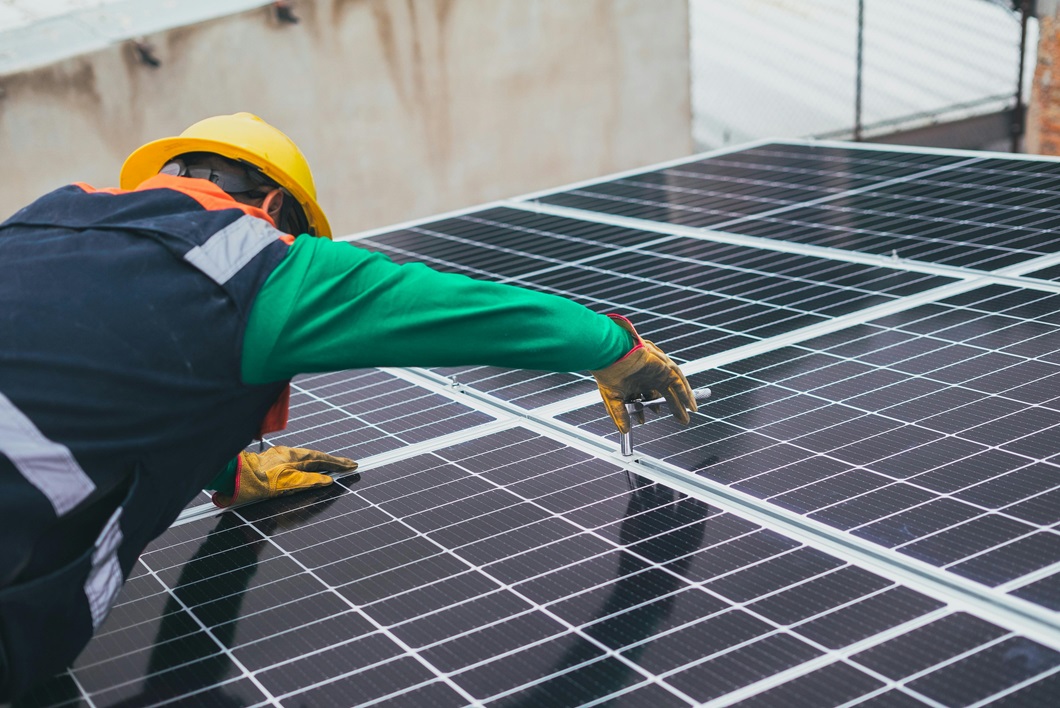In recent years, there has been a significant surge in homeowners transitioning to solar energy. With the promise of reduced energy bills and a more environmentally friendly lifestyle, solar panels have become an attractive investment for many. However, like any other investment, solar panels require regular maintenance to ensure optimal performance and longevity. In this blog, we’ll delve into why homeowners should prioritize solar panel inspection, explore common issues such as wear and tear, dirt, and animal invasions, discuss the repair process, and then explore the symbiotic relationship between solar panels and electric car chargers, highlighting the benefits for homeowners.
Why Solar Panel Inspection Matters:
Solar panels are exposed to various elements year-round, from harsh weather conditions to natural debris and even animal activity. Over time, these factors can take a toll on the efficiency and functionality of solar panels. Regular inspection allows homeowners to identify potential issues early on, preventing more significant problems down the line. Here are some key reasons why solar panel inspection is essential:
- Wear and Tear: Like any outdoor equipment, solar panels are susceptible to wear and tear over time. Exposure to sunlight, rain, snow, and temperature fluctuations can degrade the materials and components of solar panels, leading to reduced efficiency and performance.
- Dirt and Debris Build-Up: Dust, leaves, bird droppings, and other debris can accumulate on the surface of solar panels, creating a barrier that blocks sunlight and reduces energy production. Regular cleaning and inspection can prevent this build-up and ensure maximum sunlight exposure.
- Animal Invasions/Damage: Birds, squirrels, and other critters may see solar panels as an inviting nesting ground or a source of shelter. Unfortunately, their presence can lead to damage to wiring, scratching of the panel surface, and even electrical hazards. Inspection helps detect signs of animal activity and address any damage promptly.
The Repair Process:
When issues are identified during a solar panel inspection, prompt action is crucial to prevent further damage and maintain optimal performance. The repair process typically involves the following steps:
- Assessment: A qualified technician will assess the condition of the solar panels, identifying any damage, wear, or performance issues.
- Cleaning: If dirt or debris is present, the panels will be cleaned thoroughly using specialized equipment and cleaning solutions to ensure maximum sunlight absorption.
- Damage Repair: Any damage to the panels, such as cracks, scratches, or broken components, will be repaired or replaced as needed. This may involve soldering, sealing, or replacing damaged parts.
- Testing: Once repairs are completed, the entire solar panel system will be tested to ensure that it is functioning correctly and efficiently.
- Preventive Measures: To mitigate future issues, the technician may recommend preventive measures such as installing bird deterrents or upgrading protective enclosures.
Repairs can be tricky, and risky to deal with. The best way to repair solar panels is by hiring a company specialized in solar services.
Integrating Solar Panels with Electric Car Chargers:
In addition to powering homes, solar energy can also be utilized to charge electric vehicles (EVs), offering homeowners a convenient and eco-friendly transportation solution. Integrating solar panels with electric car chargers provides several benefits:
- Cost Savings: By harnessing solar energy to charge their EVs, homeowners can reduce their reliance on grid electricity, leading to lower charging costs over time. This can result in significant savings, especially as electricity prices continue to rise.
- Environmental Impact: Electric vehicles are already more environmentally friendly than their gasoline counterparts, but when charged with solar energy, their carbon footprint becomes even smaller. By driving on solar power, homeowners can further reduce their greenhouse gas emissions and contribute to a cleaner, greener planet.
- Energy Independence: Solar-powered EV charging gives homeowners greater energy independence, allowing them to generate and consume their electricity on-site. This can be particularly beneficial during power outages or emergencies when access to the grid may be limited.
- Convenience: With a solar-powered EV charging station at home, homeowners can enjoy the convenience of charging their vehicles overnight or during the day, without having to visit public charging stations or worry about range anxiety. EV charger installation can also be done easily by technical professionals making the whole process easy.
Conclusion:
Investing in solar panels offers homeowners a sustainable and cost-effective way to power their homes while reducing their environmental impact. However, to maximize the benefits of solar energy, regular inspection and maintenance are essential. By addressing issues such as wear and tear, dirt, and animal damage promptly, homeowners can ensure that their solar panels operate efficiently for years to come. Furthermore, integrating solar panels with electric car chargers presents an exciting opportunity to further reduce energy costs, decrease carbon emissions, and enhance energy independence. As the world continues to embrace renewable energy solutions, the synergistic relationship between solar panels and electric car chargers offers a compelling vision for a cleaner, brighter future.
Photo by Los Muertos Crew: https://www.pexels.com/photo/solar-technician-installing-solar-panel-8853502/

